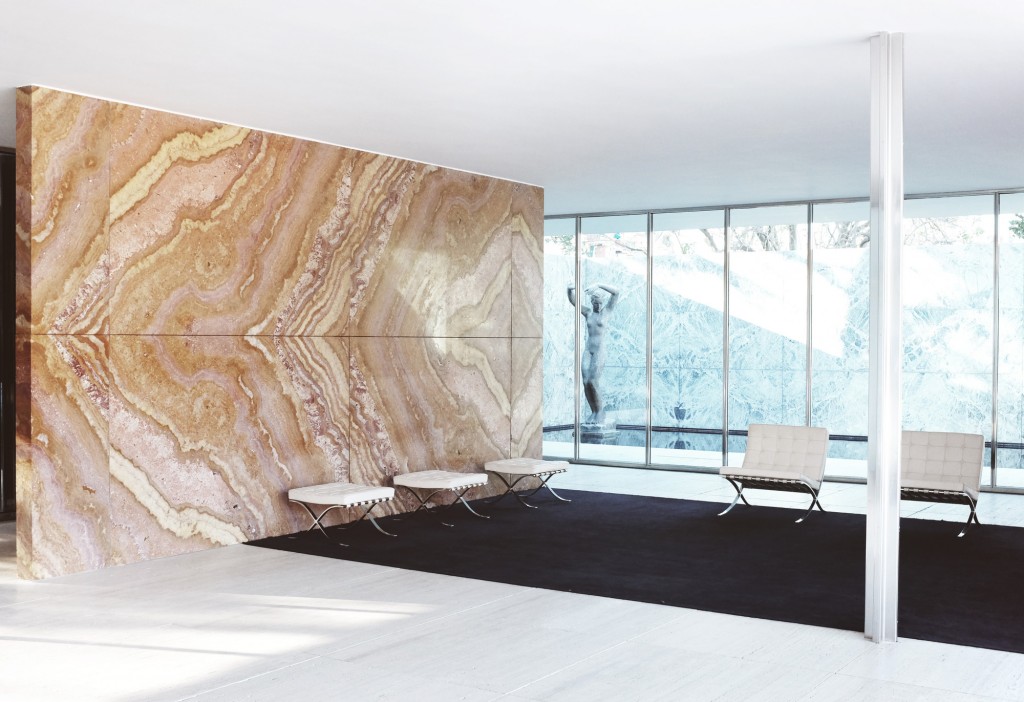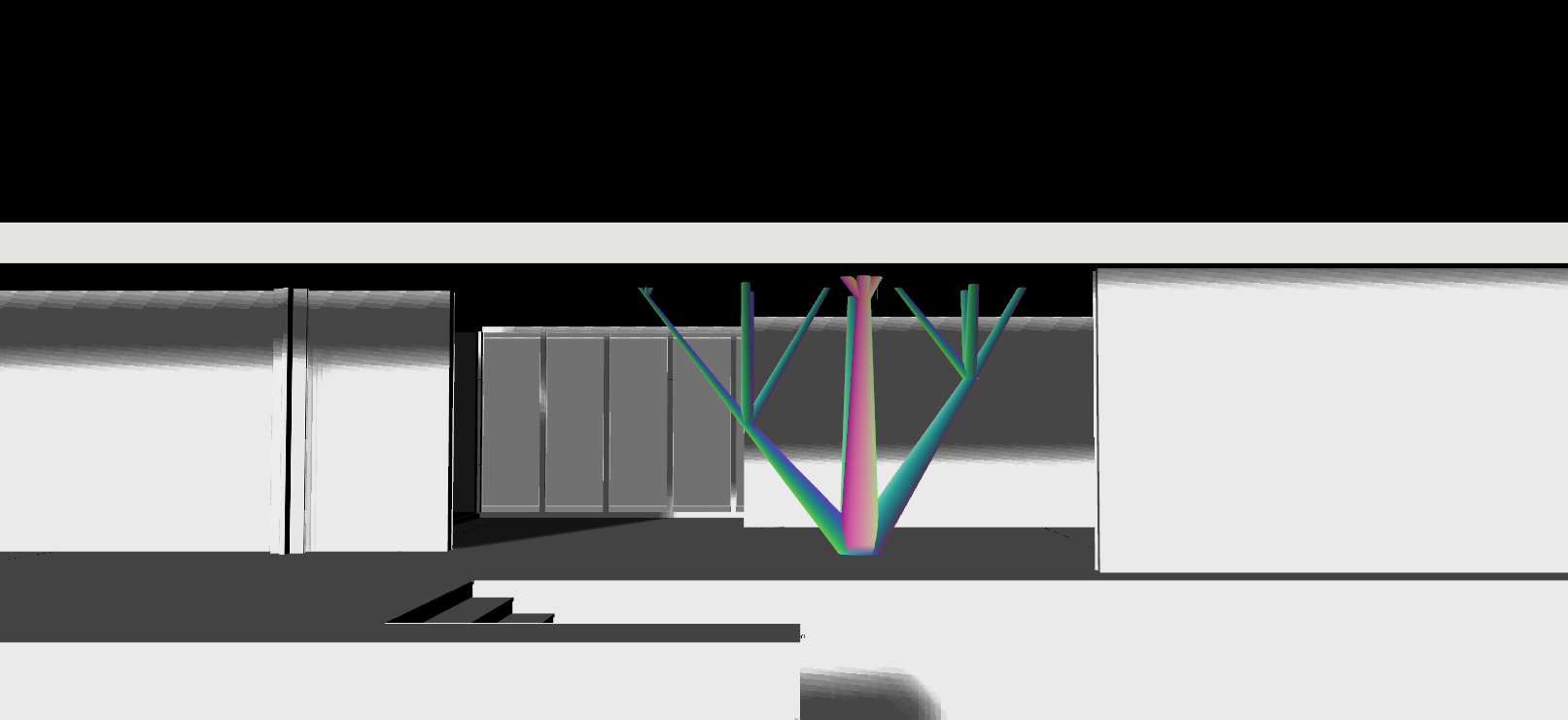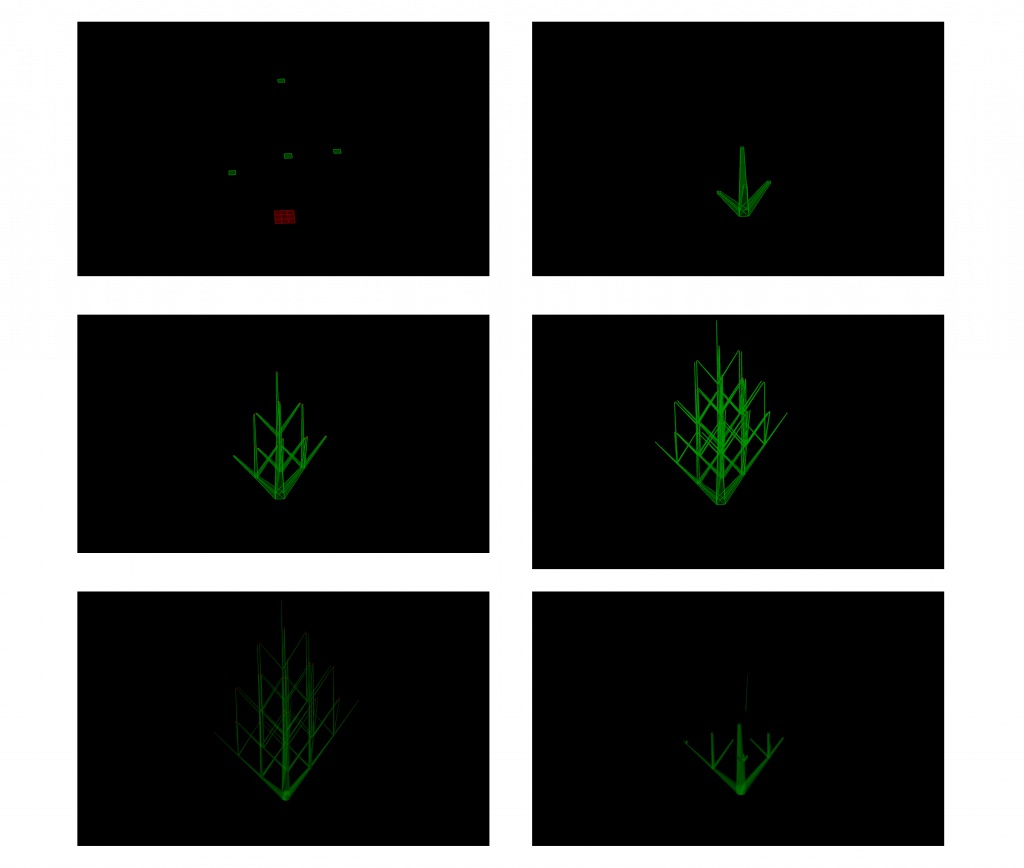The aim of this project was to firstly choose one of the existing elements within the Barcelona pavilion and then to modify this element through the application and implication of looping and recursive strategies in grasshopper.
The chosen element from the pavilion, is one of the central columns with the idea to possibly carry the load of the roof through only one vertical element. To reach the desired goal, the geometry of the column was manipulated through bifurcation and distribution of the load bearing elements.
The basic geometry used in the grasshopper script is the same as the geometry of the existing columns yet changed through the use of an anemone loop to reach the desired result.

Image of the chosen column
Link:
https://www.archdaily.com/109135/ad-classics-barcelona-pavilion-mies-van-der-rohe
The final proposal describes a hypothetical situation in which all of the existing columns of the pavilion are omitted and the weight of the whole roof would be transferred through the resulted volume.
In the following image, some of the steps of the formation of the geometry are shown.
The first step was to create a square surface as the base of the column and divide the surface into 9 segments and to choose the segments that would lead us to the desired “Plus” form.
Then, each of the achieved segments were moved vertically through vectors that were created through the summision of random “Z” factors and the normals of the segments.
The previous step was done within the loop and the surface created through each iteration was leading to the final geometry.
Afterwards the resulted surfaces were smoothed in order to create a more visually aesthetic element and the morphology of the final element was adjusted to the dimensions of the pavilion.

Design Process
Recursive Topologies is a project of IAAC, developed at the Master in Advanced Architecture in 2018 by:
Student: Baran Mostafa Tehrani
Faculty: Rodrigo Aguirre, Aldo Sollazo